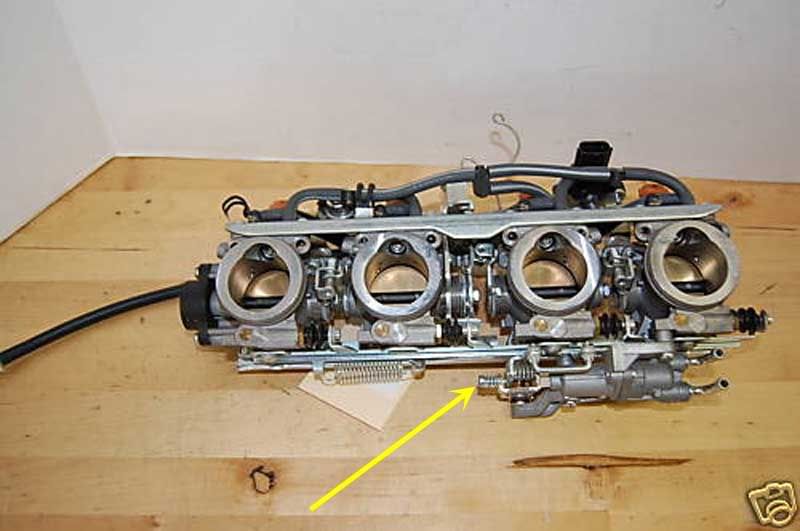RadioHowie
I Miss Beemerdons!
There was recently a discussion about Gen IIs suffering from poor fast idle issues and FredW and I came to the conclusion that the thermo-wax motor that controls the fast idle MIGHT be adjustable, at least from the graphic in the FSM.
Scanning eBay looking for a replacement cylinder head, I came across THIS set of throttle bodies for sale.
Fortunately, the seller took a decent set of pictures, including one where the thermo-wax motor is clearly visible. When the TBs are mounted on the bike, you can't see it for dick, but in the pics, it's plain as day.....

.....and good news for those of you suffering from "slow" fast idle, that sucker is obviously adjustable! The arrow clearly points to an adjusting screw, and it is directly beneath the throttle cable attachment points area, so should be visible from the top and accessible from the right with a long shafted screwdriver.
Could be a solution for those reporting "clunking" at cold start because the motor simply is idling too slowly.
Might be trial and error to get the idle where it runs comfortably, since as soon as you start the bike, the wax is gonna start melting and the fast idle will subside. But careful observance of the fast idle one day, a slight adjustment, then observing the next day, some of your clunking issues might go away, since it's simply an issue of the cold motor not having enough flywheel affect when first cranked.
Scanning eBay looking for a replacement cylinder head, I came across THIS set of throttle bodies for sale.
Fortunately, the seller took a decent set of pictures, including one where the thermo-wax motor is clearly visible. When the TBs are mounted on the bike, you can't see it for dick, but in the pics, it's plain as day.....

.....and good news for those of you suffering from "slow" fast idle, that sucker is obviously adjustable! The arrow clearly points to an adjusting screw, and it is directly beneath the throttle cable attachment points area, so should be visible from the top and accessible from the right with a long shafted screwdriver.
Could be a solution for those reporting "clunking" at cold start because the motor simply is idling too slowly.
Might be trial and error to get the idle where it runs comfortably, since as soon as you start the bike, the wax is gonna start melting and the fast idle will subside. But careful observance of the fast idle one day, a slight adjustment, then observing the next day, some of your clunking issues might go away, since it's simply an issue of the cold motor not having enough flywheel affect when first cranked.





